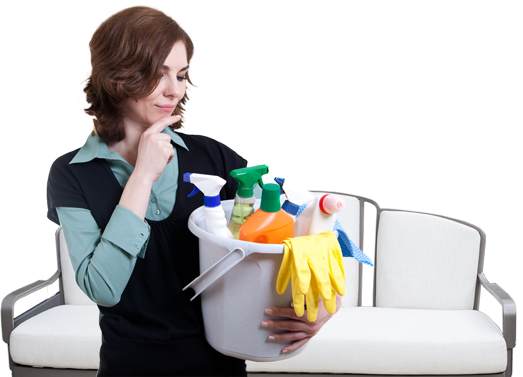Eliminate Damp Odors with These Proven Strategies
Posted on 31/08/2025
Eliminate Damp Odors with These Proven Strategies
Do persistent musty smells have you worried about your home's freshness? Damp odors can quickly turn any space from inviting to unpleasant, potentially signaling hidden moisture issues. Fortunately, with the right approach, you can eliminate damp odors efficiently and even prevent them from returning. This comprehensive guide walks you through tested techniques to banish unwanted smells, safeguard your living environment, and enjoy long-lasting freshness.

Understanding the Causes of Damp Odors
Before you can fully remove damp smells, it's crucial to identify the source. Damp odors (often described as "musty" or "moldy") stem from excess moisture, which enables the growth of mold, mildew, and bacteria. These culprits flourish in environments such as:
- Basements with poor ventilation
- Bathrooms or kitchens lacking proper aeration
- Attics exposed to leaks or high humidity
- Closets and cupboards in humid climates
- Carpets and upholstery exposed to spills or flooding
Common sources of excess moisture include leaky roofs, plumbing issues, inadequate insulation, groundwater intrusion, or everyday activities like cooking and showering. Tackling the underlying cause is essential to permanently eradicate damp smells from any indoor area.
Proven Strategies to Eliminate Damp Odor
Below you'll discover actionable methods to remove musty odors and ensure your home smells clean and inviting again.
1. Locate and Fix Moisture Issues
Step one: Carefully inspect the affected area. Use your senses--look for visible mold or mildew, feel for damp walls or floors, and follow the odor to its strongest points.
- Check for leaks: Examine pipes, under sinks, roofs, and windows. Repair or seal any faulty areas.
- Look for condensation: Windows, pipes, and cold surfaces may "sweat" in humid weather. Insulate cold surfaces where possible.
- Assess waterproofing: Basements and crawlspaces may need improved drainage or a vapor barrier.
Only once you've addressed the source of moisture can you be truly effective at eliminating odors.
2. Improve Air Circulation and Ventilation
Stagnant air is a major contributor to lingering dampness and musty odors. Consider the following:
- Open windows daily to encourage airflow.
- Use exhaust fans in bathrooms and kitchens to remove steam and cooking moisture.
- Install ventilation grilles or airbricks in enclosed spaces like basements and wardrobes.
- Consider mechanical ventilation systems or an air exchanger for persistently humid homes.
Fresh air helps reduce moisture and quickly disperses odors, preventing them from settling into fabrics and walls.
3. Use Dehumidifiers to Remove Excess Moisture
Dehumidifiers are among the easiest and most effective tools to remove damp smells caused by high humidity. These appliances:
- Extract moisture from the air, making it less hospitable to mold and mildew.
- Come in various sizes, from small wardrobe units to whole-house models.
- Should be emptied and cleaned regularly for optimal performance.
Pro tip: Set your dehumidifier to maintain indoor humidity between 30% and 50% for the best results in controlling odor and mold growth.
4. Clean Thoroughly with Proven Methods
Once moisture is under control, it's time to target surfaces and textiles that may harbor odors, mold, or mildew.
- Wash fabrics: Launder drapes, rugs, upholstered cushion covers, and bedding. Use hot water and, if appropriate, add a cup of white vinegar to the rinse cycle as a natural deodorizer.
- Clean hard surfaces: Scrub walls, floors, tiles, and fixtures with a solution of water and vinegar (1:1 ratio). Add a few drops of essential oil for a pleasant scent if desired.
- Treat mold/mildew: Use a diluted bleach solution (one-part bleach to ten parts water) for stubborn areas, always ensuring proper ventilation. Commercial mold removers are also available.
Never mix bleach and ammonia, and wear gloves when cleaning with strong chemicals.
5. Neutralize Odor with Natural and Commercial Solutions
Physical cleaning may not be enough to eliminate lingering musty odors. Try the following deodorizers:
- Baking soda: Sprinkle generously onto carpets, mattresses, and upholstery. Let sit for several hours before vacuuming up. Baking soda absorbs both moisture and odor.
- Activated charcoal: Place bowls of activated carbon in rooms, closets, or drawers. This material is highly effective at trapping odors.
- White vinegar: Fill shallow bowls with vinegar and place them in problem areas overnight. The vinegar will absorb bad smells from the air.
- Commercial odor absorbers: Products labeled as "moisture absorbers" or specialty odor eliminators can be effective, especially in closed spaces like wardrobes or storage bins.
6. Replace or Deep Clean Soft Furnishings
Sometimes, textiles like carpets, mattresses, or curtains may be too saturated with odor or mold to be salvaged. Consider the following:
- Hire a professional steam cleaning service for large carpets or upholstery.
- Deep clean or replace affected insulation or carpet padding.
- If mold has penetrated into the material, disposal may be the safest option.
7. Ensure Ongoing Prevention to Keep Damp Odors Away
Prevention is always better than remediation. Once you've removed odors, implement strategies that keep moisture at bay:
- Install vapor barriers in basements and crawlspaces.
- Use silica gel packs or moisture absorbers in wardrobes and storage boxes.
- Improve attic or loft insulation to prevent condensation.
- Wipe down bathrooms and kitchens after use to eliminate standing water.
- Maintain gutters and downspouts to direct rainwater away from the home.
- Regularly inspect plumbing and water-using appliances for leaks.
Frequently Asked Questions About Damp Odors
Why do damp smells keep coming back?
If musty odors are persistent, the underlying moisture issue--such as a small leak or ongoing condensation--may not have been fully resolved. Regularly double-check for new leaks, and consider installing a humidity monitor for at-risk rooms.
Are damp odors dangerous?
While the smell itself isn't toxic, it may indicate the presence of hidden mold. Some molds release allergens and mycotoxins that can impact susceptible individuals. It's important to address the root cause and remove visible mold promptly for health and comfort.
Can air fresheners eliminate musty odors?
Air fresheners may temporarily mask damp smells, but they do not remove the underlying source. For a real solution, prioritize drying, cleaning, and deodorizing as detailed above.
How quickly can I get rid of damp odors?
The time it takes depends on the severity of the issue. Minor mustiness can often be resolved in a day or two with proper ventilation and odor absorbers. Persistent or recurring smells may require more extensive remediation and ongoing monitoring.
Summary: Say Goodbye to Damp Odors for Good
Eliminating damp odors is about more than just creating a pleasant environment--it's about maintaining a healthy, comfortable home. By identifying the source of moisture, improving ventilation, using dehumidifiers, and employing powerful deodorizing strategies, you can remove damp and musty odors for good. Don't forget ongoing prevention: regular checks and moisture control are essential to keep musty smells at bay.

Key Takeaways on Removing Damp and Musty Odors
- Identify and fix the root cause of excess moisture.
- Enhance ventilation and air circulation throughout your home.
- Utilize dehumidifiers to control humidity levels.
- Clean and deodorize all affected surfaces and furnishings.
- Use natural and commercial odor absorbers for lingering smells.
- Prioritize prevention to avoid future damp issues and odors.
Final Thoughts: Enjoy a Fresh, Odor-Free Home
The battle against damp smells is winnable with systematic, proven strategies. Use these comprehensive tips to eliminate musty odors from every corner of your home, reclaim your indoor air quality, and enjoy a space that is as fresh and healthy as it is welcoming!





